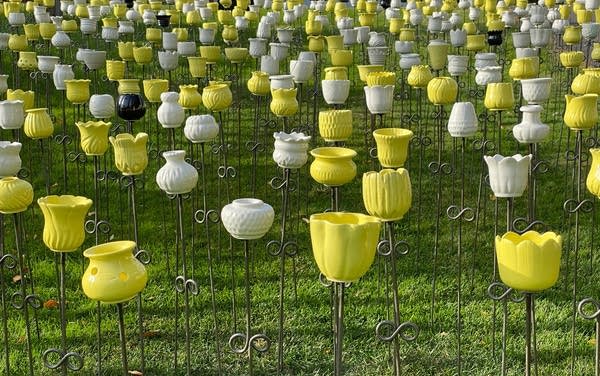Art Hounds: Public art installations address historical trauma, mental health
Also the 20th annual Twin Cities Book Festival goes virtual

"The Rainflower Project" by Damien Wolf. Made with stoneware, hand-thrown and hand-carved, affixed to a hand-crafted steel stem.
Courtesy of Damien Wolf
Go Deeper.
Create an account or log in to save stories.
Like this?
Thanks for liking this story! We have added it to a list of your favorite stories.



